Balkinization
an unanticipated consequence of
Jack M. Balkin
Balkinization Symposiums: A Continuing List
E-mail:
Jack Balkin:
jackbalkin at yahoo.com
Bruce Ackerman
bruce.ackerman at yale.edu
Ian Ayres
ian.ayres at yale.edu
Corey Brettschneider
corey_brettschneider at brown.edu
Mary Dudziak
mary.l.dudziak at emory.edu
Joey Fishkin
joey.fishkin at gmail.com
Heather Gerken heather.gerken at yale.edu
Abbe Gluck abbe.gluck at yale.edu
Mark Graber
mgraber at law.umaryland.edu
Stephen Griffin
sgriffin at tulane.edu
Jonathan Hafetz
jonathan.hafetz at shu.edu
Jeremy Kessler
jkessler at law.columbia.edu
Andrew Koppelman
akoppelman at law.northwestern.edu
Marty Lederman
msl46 at law.georgetown.edu
Sanford Levinson
slevinson at law.utexas.edu
David Luban
david.luban at gmail.com
Gerard Magliocca
gmaglioc at iupui.edu
Jason Mazzone
mazzonej at illinois.edu
Linda McClain
lmcclain at bu.edu
John Mikhail
mikhail at law.georgetown.edu
Frank Pasquale
pasquale.frank at gmail.com
Nate Persily
npersily at gmail.com
Michael Stokes Paulsen
michaelstokespaulsen at gmail.com
Deborah Pearlstein
dpearlst at yu.edu
Rick Pildes
rick.pildes at nyu.edu
David Pozen
dpozen at law.columbia.edu
Richard Primus
raprimus at umich.edu
K. Sabeel Rahmansabeel.rahman at brooklaw.edu
Alice Ristroph
alice.ristroph at shu.edu
Neil Siegel
siegel at law.duke.edu
David Super
david.super at law.georgetown.edu
Brian Tamanaha
btamanaha at wulaw.wustl.edu
Nelson Tebbe
nelson.tebbe at brooklaw.edu
Mark Tushnet
mtushnet at law.harvard.edu
Adam Winkler
winkler at ucla.edu
Compendium of posts on Hobby Lobby and related cases
The Anti-Torture Memos: Balkinization Posts on Torture, Interrogation, Detention, War Powers, and OLC
The Anti-Torture Memos (arranged by topic)
Recent Posts
Where Impoundment Litigation Stands after NIH v. APHA
Just A Few Blogs
ACS Blog
Alas, a Blog
Althouse
Arts and Letters Daily
Atrios (Eschaton)
Bill of Health
Buzzflash.com
Buzz Machine
Cato at Liberty
Juan Cole (Informed Comment)
Concurring Opinions
The Constitution in 2020
Corrente
Crooked Timber
Daily Howler
Daily Kos
Dana Boyd
Brad DeLong
Digby (Hullabaloo)
Discriminations
Daniel Drezner
Kevin Drum (Mother Jones)
Electrolite
En Banc
Eunomia (Daniel Larison)
Fafblog
Michael Froomkin (Discourse.net)
GovLab (Beth Noveck)
Rick Hasen (Election Law)
History News Network
How Appealing
Ignatz (Sam Heldman)
The Importance of (Ernie Miller)
Infolaw
Instapundit
International Economic Law and Policy Blog
IntLawGrrls
Jacob Levy
Jesus' General
Jurisdynamics
The Kitchen Cabinet
Mark Kleiman
Law Blog Central
Larry Lessig
Lawyers, Guns and Money
Liberal Oasis
Brian Leiter's Law School Reports
The Leiter Reports
Marginal Revolution
Megan McArdle
Memeorandum
Metafilter
Mirror of Justice
The New Republic
Newseum
No More Mister Nice Blog
Brendan Nyhan
Opinio Juris
Orcinus
The Originalism Blog
Pandagon
Passport (Foreign Policy)
Overcoming Bias
Political Animal (Washington Monthly)
Political Theory Daily Review
Political Wire (Taegan Goddard)
The Poor Man
Virginia Postrel
Prawfsblawg
Public Reason
Jonathan Rauch
Raw Story
Redstate
ReligiousLeftLaw.com
Reporters Committee For Freedom of the Press
Reproductive Rights Blog
Rothman's Roadmap to the Right of Publicity
SCOTUS Blog
Seeing the Forest
Clay Shirky
The Shifted Librarian
The Situationist
Larry Solum (Legal Theory)
Andrew Sullivan
Talking Points Memo
Talk Left
Tapped
Tbogg
TechPresident
The Paper Chase (Jurist)
Tom Paine
Tom Tomorrow (This Modern World)
Eve Tushnet
Uggabugga
University of Chicago Law School Faculty Blog
Unqualified Offerings
The Volokh Conspiracy
War and Piece (Laura Rozen)
Wampum
Oliver Willis
Wonkette
Written Description
Matthew Yglesias
Yin
Your Choice of Feeds
1. XML
powered by
2. Atom Feed
3. RSS 2.0
Where Impoundment Litigation Stands after NIH v. APHA
David Super
For months, those challenging the Trump
Administration’s massive impoundment of appropriated funds have been left to try
to divine deep meanings from cryptic orders on the Supreme Court’s shadow
docket. Now, in National Institutes of Health
v. American Public Health Association, we have important if incomplete
answers about one important branch of impoundment litigation. This post seeks to put NIH v. APHA into
context and anticipate next steps in this kind of litigation. I will leave the legal merits of the Court’s
disposition for others to assess. The Trump Administration’s impoundments
can be divided into three categories.
First, it has sought to cancel or ignore legal obligations the federal
government has already assumed. Second,
it has refused to obligate appropriated funds.
And third, it proposed a package of proposed rescissions to Congress
under the Impoundment Control Act and received a largely favorable action under
the ICA’s expedited procedures. Although
billions of dollars are at stake in each category, the second is by far the
largest. The impoundments in NIH v. APHA were
in the first category: already obligated
funds. The issues in the second category
(funds withheld prior to obligation) are quite different and therefore will see
only modest effects from this decision. NIH v. APHA involved a challenge to
NIH’s termination of roughly $780 million in grants that it asserted involved “illegal
DEI” (Diversity, Equity and Inclusion), “gender identity”, or related topics of
which the Administration disapproves.
After two judges recused themselves, the case was assigned to Senior
Judge William G. Young, a Ronald Reagan appointee. Judge Young combined a hearing on
plaintiffs’ motion for a preliminary injunction with a trial on the
merits. He “found as fact that
there was pervasive racial discrimination in selecting grants for termination.” He also found “by a fair preponderance of the
evidence that the grant terminations here at issue demonstrate an unmistakable
pattern of discrimination against women’s health issues.” In addition, he made a “factual finding that
there has been extensive discrimination against everyone whose lived experience
of their sexuality is in any way different from the executive orthodoxy
expressed in the President’s fiat” but concluded that the Supreme Court’s
recent decision in U.S. v. Skrmetti precluded
any legal consequences for that discrimination.
Judge Young invalidated the policy
declarations implementing the President’s executive orders that NIH relied upon
to cancel the grants. He also ordered NIH
to restore the grantees’ funding. Both
he and the First Circuit denied the Government’s motions for a stay of this
order. At the Supreme Court, four justices (the
Chief Justice and Justices Sotomayor, Kagan and Jackson) voted to deny a stay
completely. Four others (Justices
Thomas, Alito, Gorsuch, and Kavanaugh) voted to grant the stay in full. Opinions by the Chief Justice and Justice
Gorsuch showed that at least six, and probably eight, justices believed that
the parts of the order invalidating the guidance material and requiring the
grants to be reinstated should be treated similarly. The decisive vote, however, belonged to
Justice Barrett, who agreed to stay the order reinstating the funding but
denied a stay of the order invalidating the policy directives. Justice Barrett concluded that the Court’s
prior summary grant of a stay in Department of Education v.
California settled the question that parties trying to enforce federal
contracts must seek relief in the Court of Federal Claims. She also said that the Government should not
be required to make payments while litigation is pending because of the
impossibility of reclaiming that money should it ultimately prevail. On the other hand, Justice Barrett held
that the district court did have jurisdiction under the Administrative
Procedure Act to invalidate unlawful policy guidance. Although leaving open the possibility that
the guidance at issue in this case might ultimately survive, she saw no reason
to stay that part of the district court’s order. She acknowledged that this might well compel
challengers to sue first in district court to invalidate the Administration’s
policy documents and then file a separate action in the Court of Federal Claims
to collect their money but insisted that the Court had countenanced that
process in prior cases. This ruling presents a choice to those
with funding contracts that the Trump Administration is refusing to honor. They can still sue in district court to
invalidate any policy guidance on which those actions are based, but upon
prevailing they will have to sue again in the Court of Federal Claims to
actually obtain their funds. This will
take a very long time, which in the interim is likely to lead to layoffs at
even the most robust grantees and could threaten the existence of smaller
ones. Alternatively, they could go
directly to the Court of Federal Claims.
Few public interest litigators have much experience in that court. But with the Administration having
demonstrated a tepid commitment to complying even with explicit court mandates,
it seems highly unlikely that it would voluntarily release withheld funds even after
losing a case begun in district court about the legality of its reasons for not
paying. All this does not directly speak to the
larger category of impoundments where the Administration is refusing to
obligate funds at all. (The two
categories can overlap where the Administration refuses to honor existing obligations
but also does not re-obligate the funds to other uses authorized under the
relevant statute.) Some funds the
Administration has refused to obligate have clear intended beneficiaries (e.g.,
where a statute provides a formula for dividing up appropriated sums among the
states). In many others, however, the
Administration is simply refusing to spend the funds (sometimes by refusing to
take preparatory steps such as announcing the funds’ availability or convening
advisory committees). Where the Administration is impounding
funds by refusing to obligate them, it is subject to challenge by potential
grantees seeking the opportunity to compete for that money. Standing to seek a chance to compete is well-established,
and the Court seems unlikely to eliminate it as it has facilitated many attacks
on affirmative action. The relief they
would seek is an order forcing the Administration to move forward with whatever
process is needed to obligate the funds, which is quite different from the sort
of relief commonly granted in the Court of Federal Claims. On the other hand, the Administration is
likely to seize on Justice Barrett’s comments about the inability to regain
money should it ultimately prevail – even though those comments may be non-binding
dicta – to resist complying with any orders until it has exhausted its
appeals. If suit is filed before the
appropriated funds lapse, these delays should not prevent courts
from deciding the merits of the impoundments.
Those delays will, however, likely prove quite devastating to the
organizations that Congress sought to fund and that are capable of doing the
kinds of work Congress has determined are needed. This damage will be compounded if the
Administration has to be sued first to compel it to obligate funds and then
again to force it to honor those obligations.
Given its record of defying and evading orders to date, this risk is
very real. The result, which the Administration
surely intends, is to make the U.S. Government a far less attractive
contracting partner for private businesses and non-profits. A slow and bureaucratic counter-party in the
best of times, the federal government’s unreliability now will require anyone
contemplating contracting with it to build substantial risk premiums into their
calculations. For more than half a century – since
Republicans came to accept the broader governmental role that the New Deal inaugurated
– a key conservative position has been to shift as many functions as possible to
the private sector. The Trump
Administration, and now the Supreme Court, are making such contracts far less
viable and, no doubt, considerably more expensive. This is likely to push future policy initiatives
toward “big government” models. It also
will drive future non-MAGA administrations to omit contractual terms that their
possible MAGA successors could hijack in bad faith to breach contracts. Narrowing the government’s contractual rights
will inevitably increase its vulnerability to genuinely bad or incompetent
actors. Then again, the whole point of a
wrecking ball is to remove things from the future landscape. @DavidASuper.bsky.social @DavidASuper1
Posted
1:07 AM
by David Super [link]
Books by Balkinization Bloggers

Gerard N. Magliocca, The Actual Art of Governing: Justice Robert H. Jackson's Concurring Opinion in the Steel Seizure Case (Oxford University Press, 2025)

Linda C. McClain and Aziza Ahmed, The Routledge Companion to Gender and COVID-19 (Routledge, 2024)

David Pozen, The Constitution of the War on Drugs (Oxford University Press, 2024)

Jack M. Balkin, Memory and Authority: The Uses of History in Constitutional Interpretation (Yale University Press, 2024)
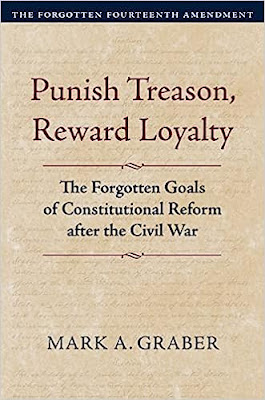
Mark A. Graber, Punish Treason, Reward Loyalty: The Forgotten Goals of Constitutional Reform after the Civil War (University of Kansas Press, 2023)
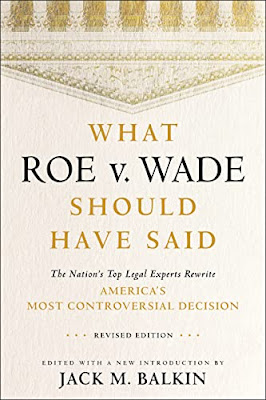
Jack M. Balkin, What Roe v. Wade Should Have Said: The Nation's Top Legal Experts Rewrite America's Most Controversial Decision - Revised Edition (NYU Press, 2023)

Andrew Koppelman, Burning Down the House: How Libertarian Philosophy Was Corrupted by Delusion and Greed (St. Martin’s Press, 2022)

Gerard N. Magliocca, Washington's Heir: The Life of Justice Bushrod Washington (Oxford University Press, 2022)
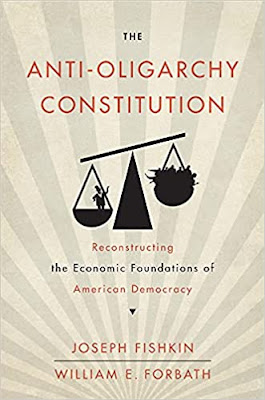
Joseph Fishkin and William E. Forbath, The Anti-Oligarchy Constitution: Reconstructing the Economic Foundations of American Democracy (Harvard University Press, 2022)
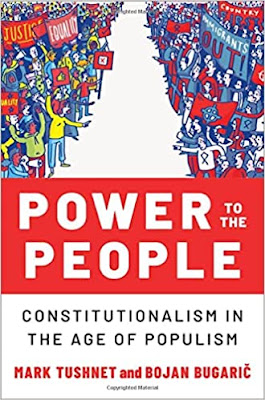
Mark Tushnet and Bojan Bugaric, Power to the People: Constitutionalism in the Age of Populism (Oxford University Press 2021).

Mark Philip Bradley and Mary L. Dudziak, eds., Making the Forever War: Marilyn B. Young on the Culture and Politics of American Militarism Culture and Politics in the Cold War and Beyond (University of Massachusetts Press, 2021).

Jack M. Balkin, What Obergefell v. Hodges Should Have Said: The Nation's Top Legal Experts Rewrite America's Same-Sex Marriage Decision (Yale University Press, 2020)

Frank Pasquale, New Laws of Robotics: Defending Human Expertise in the Age of AI (Belknap Press, 2020)

Jack M. Balkin, The Cycles of Constitutional Time (Oxford University Press, 2020)

Mark Tushnet, Taking Back the Constitution: Activist Judges and the Next Age of American Law (Yale University Press 2020).

Andrew Koppelman, Gay Rights vs. Religious Liberty?: The Unnecessary Conflict (Oxford University Press, 2020)

Ezekiel J Emanuel and Abbe R. Gluck, The Trillion Dollar Revolution: How the Affordable Care Act Transformed Politics, Law, and Health Care in America (PublicAffairs, 2020)

Linda C. McClain, Who's the Bigot?: Learning from Conflicts over Marriage and Civil Rights Law (Oxford University Press, 2020)
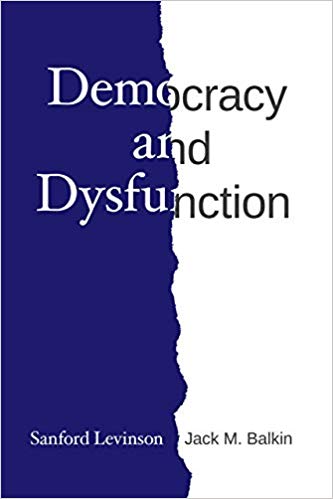
Sanford Levinson and Jack M. Balkin, Democracy and Dysfunction (University of Chicago Press, 2019)

Sanford Levinson, Written in Stone: Public Monuments in Changing Societies (Duke University Press 2018)

Mark A. Graber, Sanford Levinson, and Mark Tushnet, eds., Constitutional Democracy in Crisis? (Oxford University Press 2018)

Gerard Magliocca, The Heart of the Constitution: How the Bill of Rights became the Bill of Rights (Oxford University Press, 2018)

Cynthia Levinson and Sanford Levinson, Fault Lines in the Constitution: The Framers, Their Fights, and the Flaws that Affect Us Today (Peachtree Publishers, 2017)

Brian Z. Tamanaha, A Realistic Theory of Law (Cambridge University Press 2017)

Sanford Levinson, Nullification and Secession in Modern Constitutional Thought (University Press of Kansas 2016)

Sanford Levinson, An Argument Open to All: Reading The Federalist in the 21st Century (Yale University Press 2015)

Stephen M. Griffin, Broken Trust: Dysfunctional Government and Constitutional Reform (University Press of Kansas, 2015)

Frank Pasquale, The Black Box Society: The Secret Algorithms That Control Money and Information (Harvard University Press, 2015)

Bruce Ackerman, We the People, Volume 3: The Civil Rights Revolution (Harvard University Press, 2014)
Balkinization Symposium on We the People, Volume 3: The Civil Rights Revolution

Joseph Fishkin, Bottlenecks: A New Theory of Equal Opportunity (Oxford University Press, 2014)

Mark A. Graber, A New Introduction to American Constitutionalism (Oxford University Press, 2013)

John Mikhail, Elements of Moral Cognition: Rawls' Linguistic Analogy and the Cognitive Science of Moral and Legal Judgment (Cambridge University Press, 2013)

Gerard N. Magliocca, American Founding Son: John Bingham and the Invention of the Fourteenth Amendment (New York University Press, 2013)

Stephen M. Griffin, Long Wars and the Constitution (Harvard University Press, 2013)

Andrew Koppelman, The Tough Luck Constitution and the Assault on Health Care Reform (Oxford University Press, 2013)

James E. Fleming and Linda C. McClain, Ordered Liberty: Rights, Responsibilities, and Virtues (Harvard University Press, 2013)
Balkinization Symposium on Ordered Liberty: Rights, Responsibilities, and Virtues

Andrew Koppelman, Defending American Religious Neutrality (Harvard University Press, 2013)

Brian Z. Tamanaha, Failing Law Schools (University of Chicago Press, 2012)

Sanford Levinson, Framed: America's 51 Constitutions and the Crisis of Governance (Oxford University Press, 2012)

Linda C. McClain and Joanna L. Grossman, Gender Equality: Dimensions of Women's Equal Citizenship (Cambridge University Press, 2012)

Mary Dudziak, War Time: An Idea, Its History, Its Consequences (Oxford University Press, 2012)

Jack M. Balkin, Living Originalism (Harvard University Press, 2011)

Jason Mazzone, Copyfraud and Other Abuses of Intellectual Property Law (Stanford University Press, 2011)

Richard W. Garnett and Andrew Koppelman, First Amendment Stories, (Foundation Press 2011)

Jack M. Balkin, Constitutional Redemption: Political Faith in an Unjust World (Harvard University Press, 2011)

Gerard Magliocca, The Tragedy of William Jennings Bryan: Constitutional Law and the Politics of Backlash (Yale University Press, 2011)

Bernard Harcourt, The Illusion of Free Markets: Punishment and the Myth of Natural Order (Harvard University Press, 2010)

Bruce Ackerman, The Decline and Fall of the American Republic (Harvard University Press, 2010)
Balkinization Symposium on The Decline and Fall of the American Republic

Ian Ayres. Carrots and Sticks: Unlock the Power of Incentives to Get Things Done (Bantam Books, 2010)

Mark Tushnet, Why the Constitution Matters (Yale University Press 2010)
Ian Ayres and Barry Nalebuff: Lifecycle Investing: A New, Safe, and Audacious Way to Improve the Performance of Your Retirement Portfolio (Basic Books, 2010)
.jpg)
Jack M. Balkin, The Laws of Change: I Ching and the Philosophy of Life (2d Edition, Sybil Creek Press 2009)

Brian Z. Tamanaha, Beyond the Formalist-Realist Divide: The Role of Politics in Judging (Princeton University Press 2009)
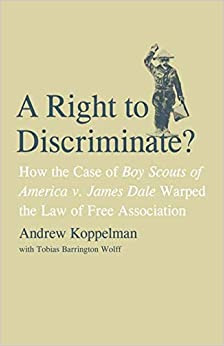
Andrew Koppelman and Tobias Barrington Wolff, A Right to Discriminate?: How the Case of Boy Scouts of America v. James Dale Warped the Law of Free Association (Yale University Press 2009)

Jack M. Balkin and Reva B. Siegel, The Constitution in 2020 (Oxford University Press 2009)
Heather K. Gerken, The Democracy Index: Why Our Election System Is Failing and How to Fix It (Princeton University Press 2009)

Mary Dudziak, Exporting American Dreams: Thurgood Marshall's African Journey (Oxford University Press 2008)

David Luban, Legal Ethics and Human Dignity (Cambridge Univ. Press 2007)

Ian Ayres, Super Crunchers: Why Thinking-By-Numbers is the New Way to be Smart (Bantam 2007)

Jack M. Balkin, James Grimmelmann, Eddan Katz, Nimrod Kozlovski, Shlomit Wagman and Tal Zarsky, eds., Cybercrime: Digital Cops in a Networked Environment (N.Y.U. Press 2007)

Jack M. Balkin and Beth Simone Noveck, The State of Play: Law, Games, and Virtual Worlds (N.Y.U. Press 2006)

Andrew Koppelman, Same Sex, Different States: When Same-Sex Marriages Cross State Lines (Yale University Press 2006)
Brian Tamanaha, Law as a Means to an End (Cambridge University Press 2006)
Sanford Levinson, Our Undemocratic Constitution (Oxford University Press 2006)
Mark Graber, Dred Scott and the Problem of Constitutional Evil (Cambridge University Press 2006)
Jack M. Balkin, ed., What Roe v. Wade Should Have Said (N.Y.U. Press 2005)
Sanford Levinson, ed., Torture: A Collection (Oxford University Press 2004)
Balkin.com homepage
Bibliography
Conlaw.net
Cultural Software
Writings
Opeds
The Information Society Project
BrownvBoard.com
Useful Links
Syllabi and Exams